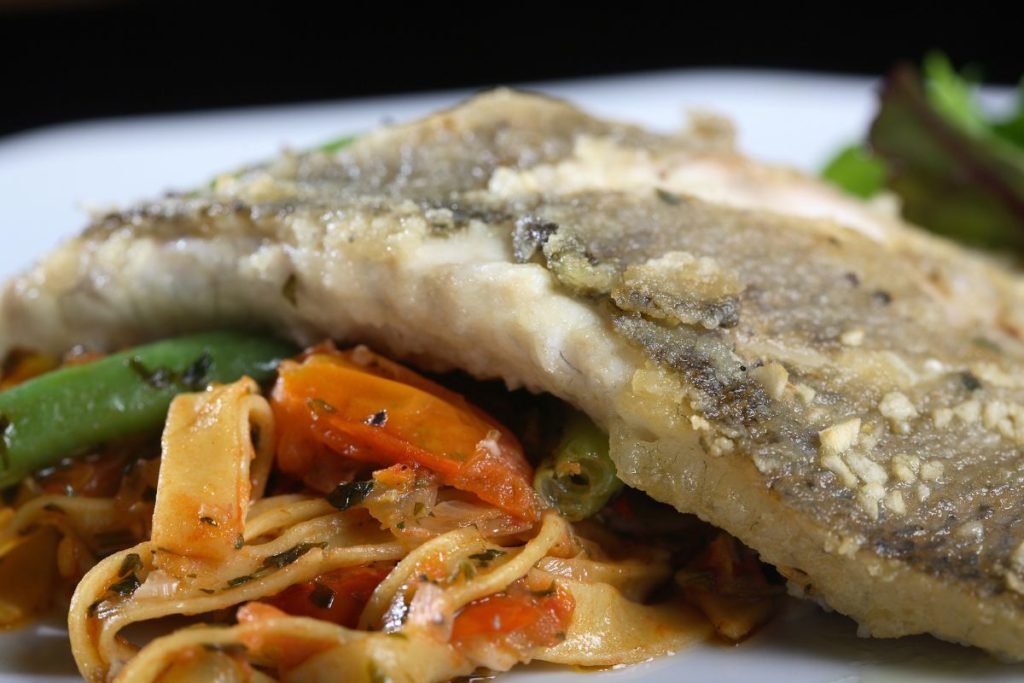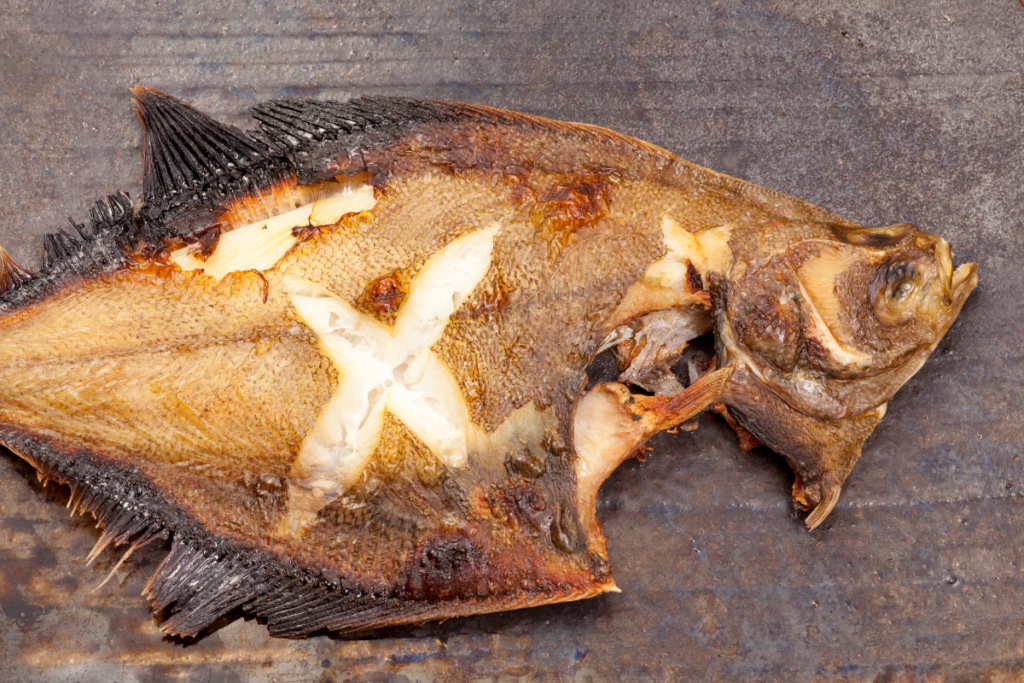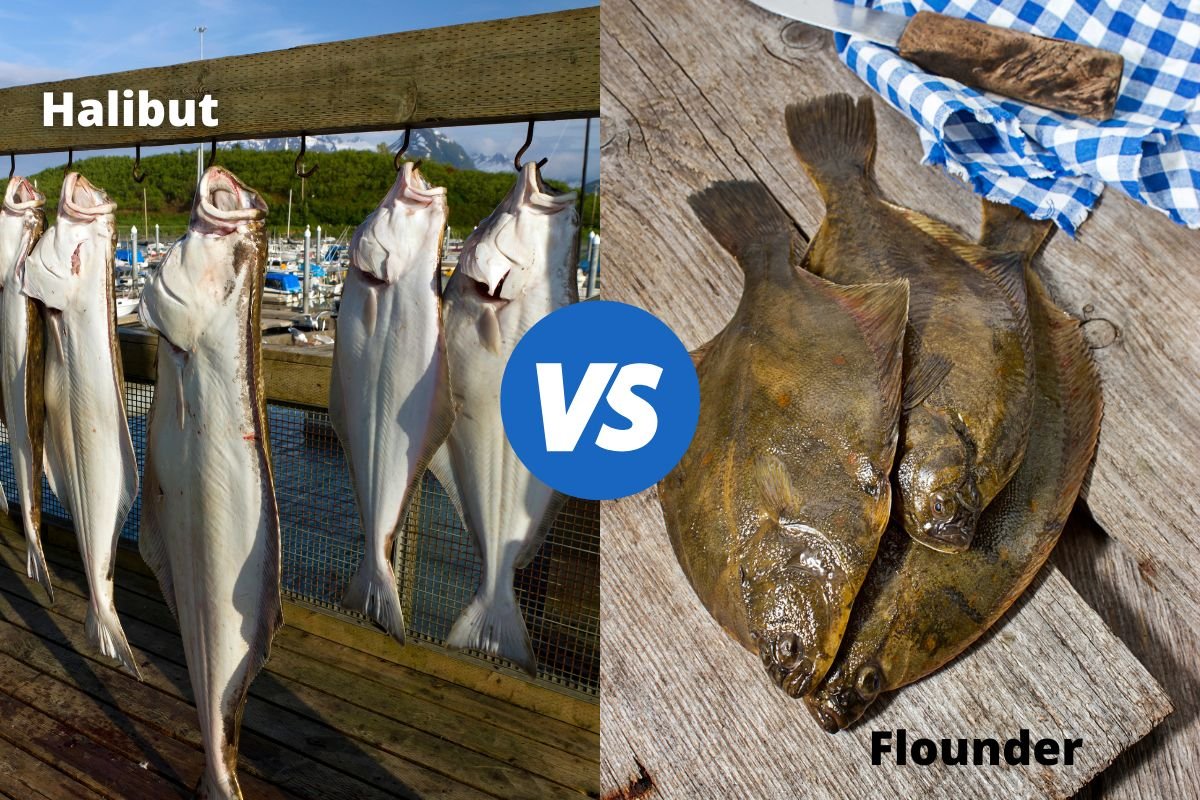When you sit down at your favorite seafood restaurant, two items that are likely to be available, are halibut, and flounder. Both offer nutritional value, are tasty meals, and are easily distinguishable on the menu.
Not so, though, if you were to pull one out of the water! The first thing you need to know is that while halibuts are flounders, flounders are not necessarily halibuts. While there are several other types of flounder, halibut is probably the least caught.
Halibut vs Flounder
While halibuts are technically flounders, there are differences. Halibuts are generally larger than most other kinds of flounder. Halibuts also have a different body shape, with more meat and less fat. Flounders are cheaper in price, being almost half the cost of Halibut per pound.
One thing is for sure when deciding what to eat for your next meal, Halibut and flounder are both excellent choices. Both are considered to be low-calorie food when compared to other protein-rich foods.
Also, current dietary guidelines from the U.S. Department of Health and Human Services and the U.S. Department of Agriculture recommend that Americans increase their seafood intake to twice a week. Source.
Halibut vs Flounder | General Comparison
The word halibut is derived from the Latin haly (holy) and butte (flat fish). There are three types of halibut; the Atlantic halibut, the Pacific halibut, and the Greenland halibut.
The Atlantic halibut is the world’s largest flatfish. Halibut are dark brown on top with a white to off-white underbelly and will feed on almost any fish or animal they can fit into their mouths.
The name “flounder” is used for several species of food and sport fish. Some common types of flounder include summer flounder (fluke), southern flounder, sole, plaice, dab, turbot, and more.
As a general rule, halibut live farther north than other flounder species. Both types of fish live near the coasts. Most flounders are found 5-30 feet down, while most halibut can be found at depths of 90-900 feet.
Pacific halibut can be found from the western coast of Alaska down to the northwestern coast of the United States.
You can also find halibut in the waters of central California. The California halibut isn’t technically a halibut, however, it is a species that’s close enough to carry the name. Atlantic halibut can be found from Greenland down through the coastal waters of Virginia. Source.
Now that you have an idea of some of the general differences, let’s look at some of the specifics.
Size
While all “flatfish” have a similar appearance, the most noticeable difference is going to be the size. Most halibut weigh between 50 and 100 pounds. Males weigh less than females, and the Atlantic female halibut can reach up to 600 pounds. The males average 25-30 pounds and can reach up to 100 pounds.
The size of the flounder depends on the species. Many flounders average 3-7 pounds, with some species averaging 10 pounds or more. Huge Pacific halibut can be more than 8 feet in length and more than 5 feet in width. These fish are sometimes referred to as “barn doors”.
Eyes
Like salmon, halibuts are born swimming and have eyes on both sides of their heads. As they grow, they begin swimming sideways and one eye migrates to the right side. All true halibut are right-eyed. California halibut are in the left-eye flounder family, but half of them end up right-eyed.
Flounders can go either way depending upon the species. While they start life swimming upright, during the larval stage they lay on either their left or right side, with the eye facing the bottom, migrating up to be top-facing.
Taste
Atlantic halibut has a lean, firm, tight-grained, white meat with a large flake, tender texture, and sweet mild flavor. It is great poached, grilled, roasted, or steamed. It is also great in soups and stews. However, because of its leanness, it can become dried out if overcooked.
The flounder is fattier and the filets are much smaller. Because of this, it is usually better to fry or bake flounder, but is also good for grilling, sautéing, or roasting.
One of the most prized flatfish is the turbot. Turbot has a gleaming flesh that retains its bright-white appearance when cooked. Turbot is best when baked whole, with the bones adding flavor. Filets can be overcooked in dry heat and steaming, poaching and pan-frying are preferable to grilling.

Price
Halibut costs approximately $17 more per pound than Flounder. One reason for this is that halibut is overfished. With the implementation of stricter regulations and a quota system, the price of halibut has nearly doubled. The taste, quality, and longer shelf life put it in higher demand which also causes prices to go up.
At your local grocery store, you’re likely to find wild caught, fresh west coast flounder filet for around $15.42 per pound. Wild caught fresh Alaskan halibut filet, on the other hand, is probably going to cost you $30.87 per pound at that same grocery store.

Halibut vs Flounder | Nutritional Value
Halibut is considered healthier due to its high percentage of b vitamins and minerals. It contains more B6, thiamin, riboflavin, niacin, folate, potassium, magnesium, zinc, and selenium, than flounders. Also, Halibut has a higher protein content and less saturated fats.
Flounder is also a wise meal choice, as it contains plenty of vitamins and minerals. Flounder provides more omega-3 fatty acids, B5, iron, phosphorus, and calcium, than halibut. Both halibut and flounder, like all fish, are superfoods. An amazing source of low-fat protein, along with being rich in essential vitamins and minerals, means these fish are full of health benefits.
Some of the benefits we see from a seafood-rich diet include a healthy heart from lowered blood pressure, reducing the risk of heart attack and stroke, healthy brain function, and reduced risk of depression. Also, we may see less inflammation and a reduced risk of arthritis. It goes a long way to help your metabolic functions as well.
Comparison Chart | Halibut vs Flounder
| Halibut | Flounder |
| Halibuts have a longer body, with pointed anal dorsal fins, giving this fish a diamond shape. | Flounders are more rounded and have uniform smaller fins, which further accentuate the rounded body shape. |
| Halibuts grow to over 400 pounds and have a lot of meat. | Flounders are usually between 5 and 30 pounds. |
| Halibuts tend to have a more forked tail. | Flounder’s tails tend to be more rounded. |
| True halibut eyes will always be on the right side of their head. | Flounders, however, can go either way. You can find ones that are right-sighted, and ones that are left-sighted, but their eyes will always be on one side or the other. |
| Halibut is a flatfish with a meatier but rather firm texture. | Flounder has a delicate and more flaky texture to its meat. |
Now that you know a thing or two about halibut and flounder, you can decide which one you want to have for dinner tonight! Need more meat? Halibut is the obvious choice. Want a slice of more delicate and flaky meat? Flounder might be just what you’re looking for.
Looking for more tasty fish choices?
See our article Salmon Vs Tilapia
See our article for Catfish Vs Tilapia
See our article for Steelhead Trout Vs Salmon
Related Questions
Is halibut just a big flounder?
Halibut is a flounder. But unlike other fish that fall under the category of flounder, halibut has more meat, a firmer texture, and less fat.
Does halibut taste fishy?
Halibut has a slightly sweet flavor and no fishy taste whatsoever. However, it all depends on how you cook it. It’s a versatile type of fish, that works well in most diets.


